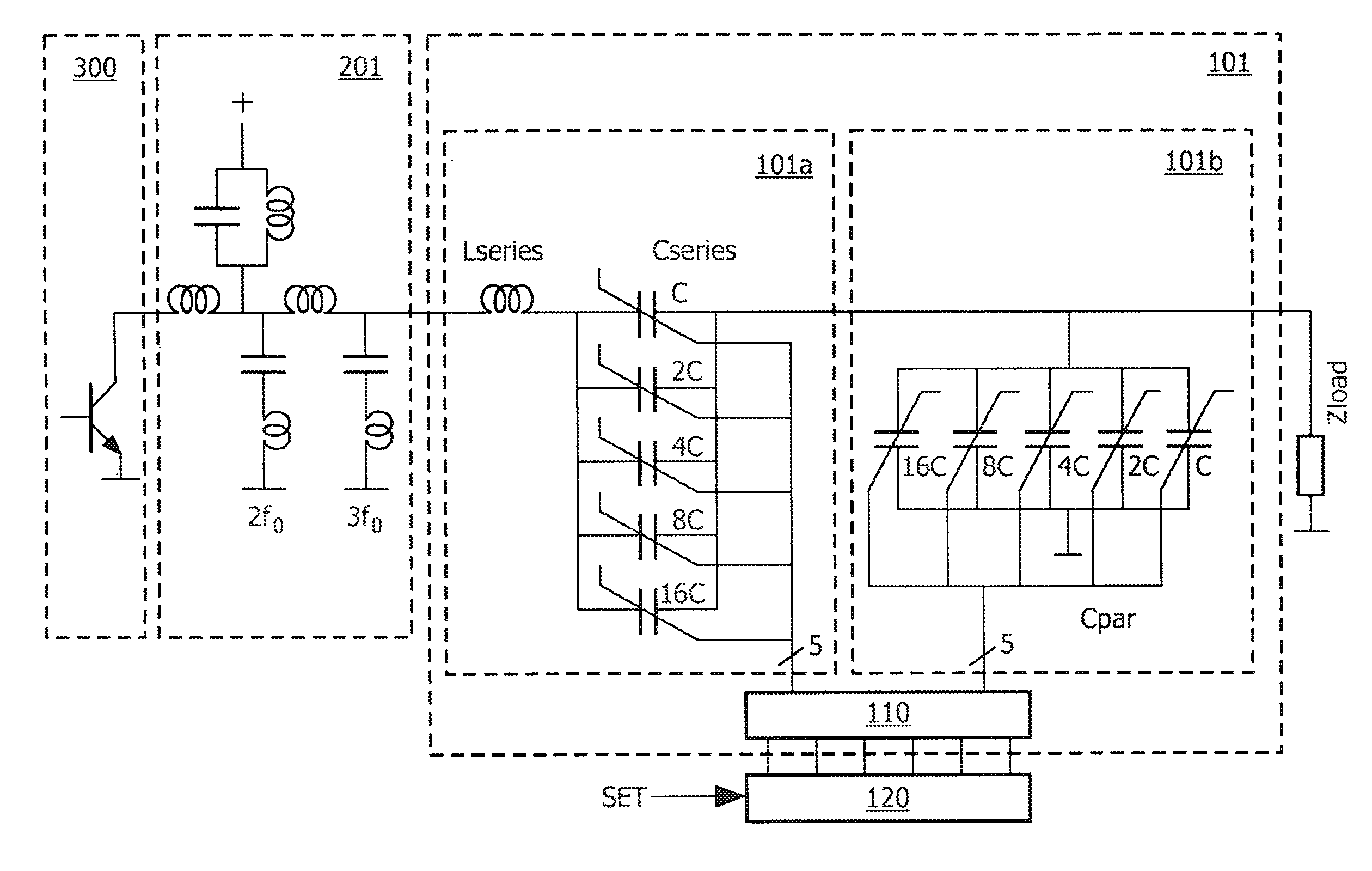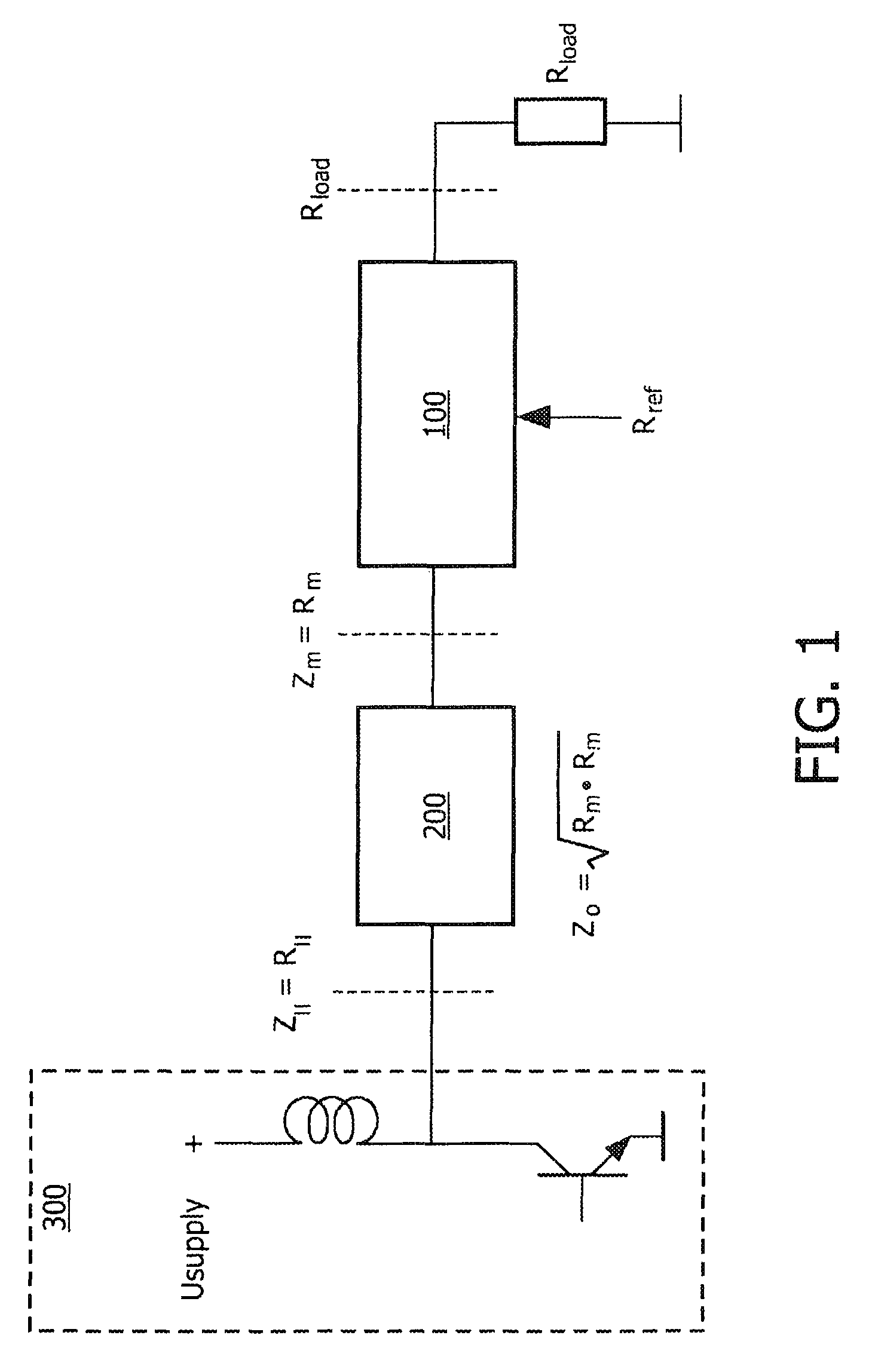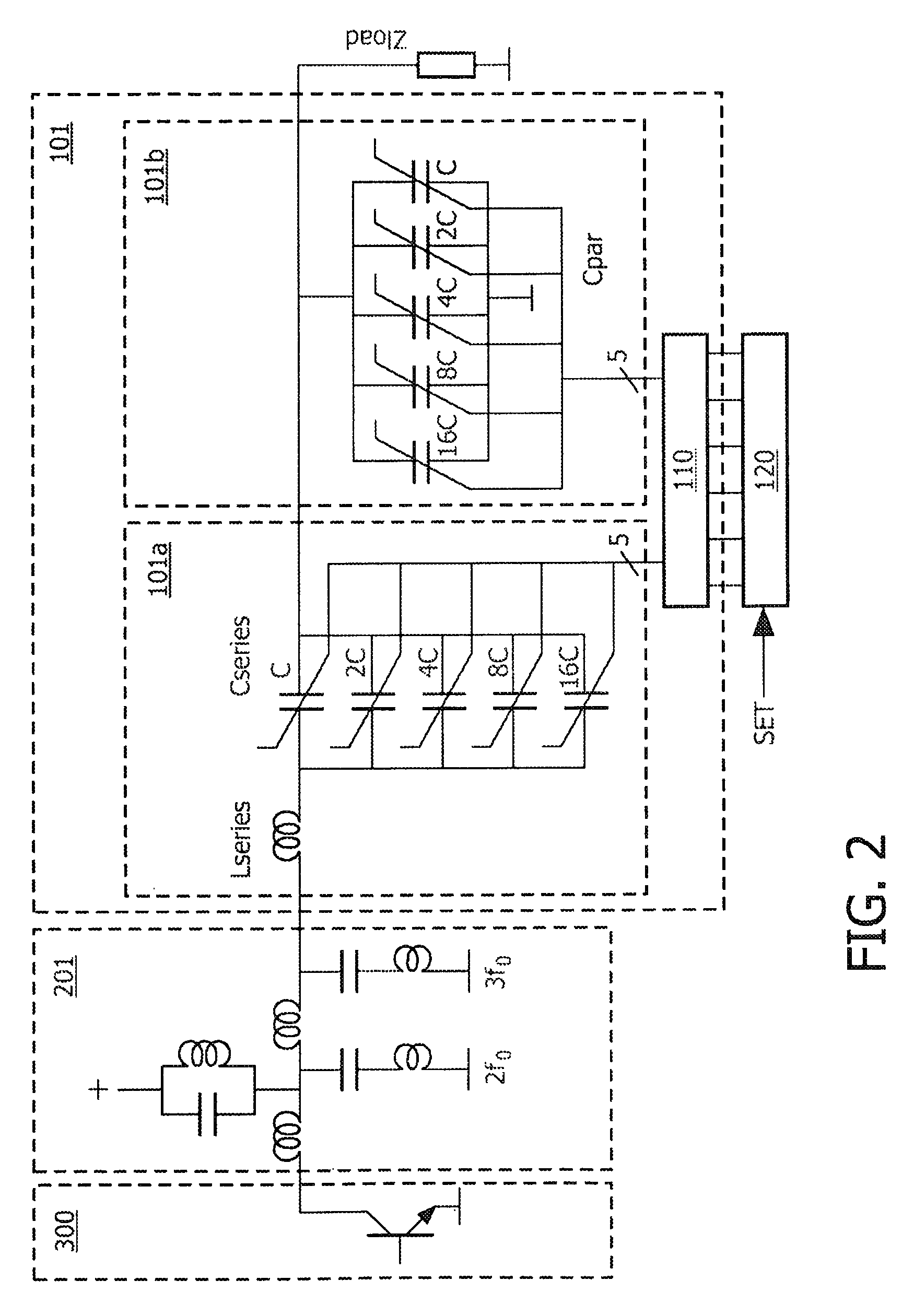Load-line adaptation
a load-line adaptation and load-line technology, applied in the field of load-line adaptation, can solve the problems of increasing the insertion loss of single l-network, and reducing the insertion efficiency of power amplifiers. the effect of saving energy
- Summary
- Abstract
- Description
- Claims
- Application Information
AI Technical Summary
Benefits of technology
Problems solved by technology
Method used
Image
Examples
Embodiment Construction
[0039]FIG. 1 shows the general concept of the adaptive load-line matching network as proposed herein is shown. First, a variable matching network 100 transforms a load impedance Rload to a matched impedance Rm, wherein the matching may be arranged such that the matched impedance Rm equals a reference value Rref. Then, a fixed impedance-inverting network 200 having a characteristic impedance of Z0 transforms the matched impedance Rm to a load-line impedance Rll, which is connected to the output of the power amplifier 300 symbolized by a transistor connected to Usupply.
[0040]Optimum efficiency can be obtained by setting the adaptive matching network 100 such that the matched impedance Rm equals Rref as a function of the actual output power of the power amplifier according to the following equation:
[0041]Rm=Rref=Z02·2·Pload(USupply-Usat)2.(0)
[0042]Thus, by the a priori knowledge on the required output power Pload, the supply voltage Usupply, the collector saturation voltage USAT of the...
PUM
 Login to View More
Login to View More Abstract
Description
Claims
Application Information
 Login to View More
Login to View More - R&D
- Intellectual Property
- Life Sciences
- Materials
- Tech Scout
- Unparalleled Data Quality
- Higher Quality Content
- 60% Fewer Hallucinations
Browse by: Latest US Patents, China's latest patents, Technical Efficacy Thesaurus, Application Domain, Technology Topic, Popular Technical Reports.
© 2025 PatSnap. All rights reserved.Legal|Privacy policy|Modern Slavery Act Transparency Statement|Sitemap|About US| Contact US: help@patsnap.com



